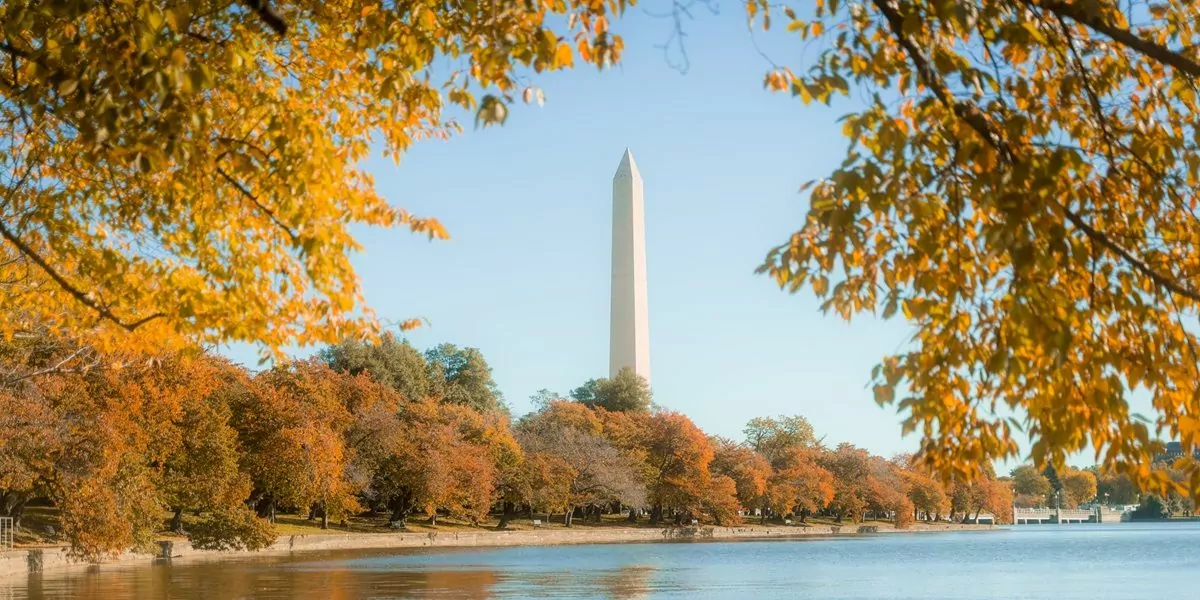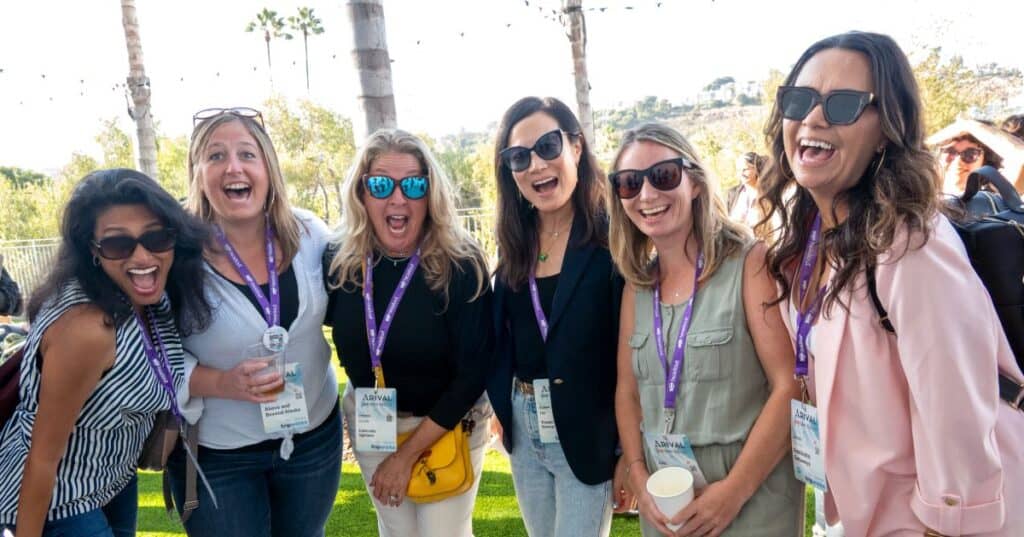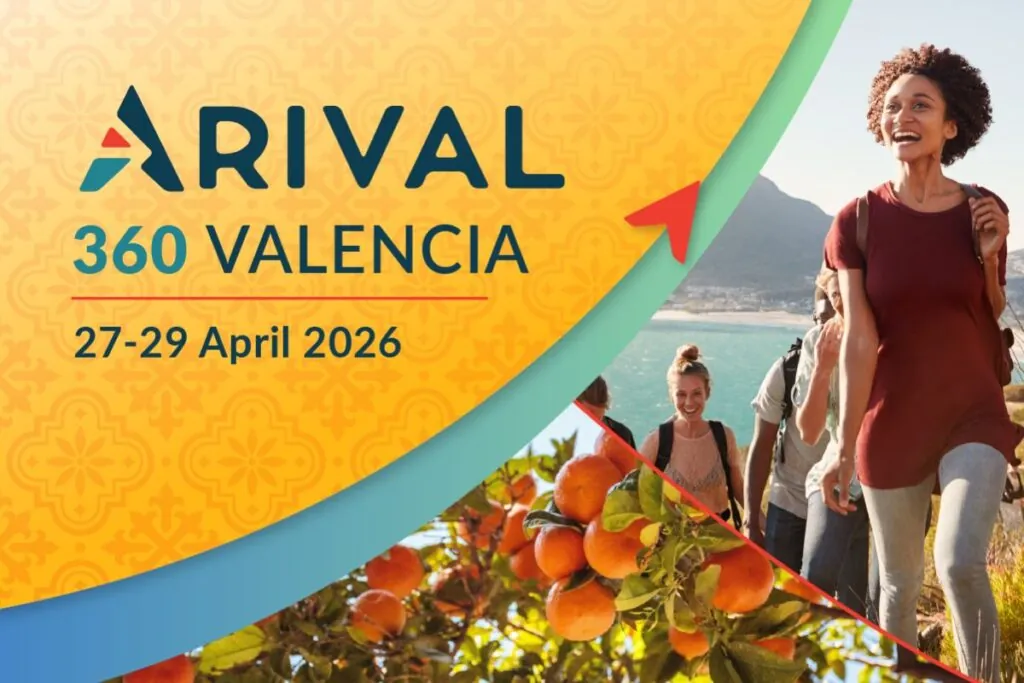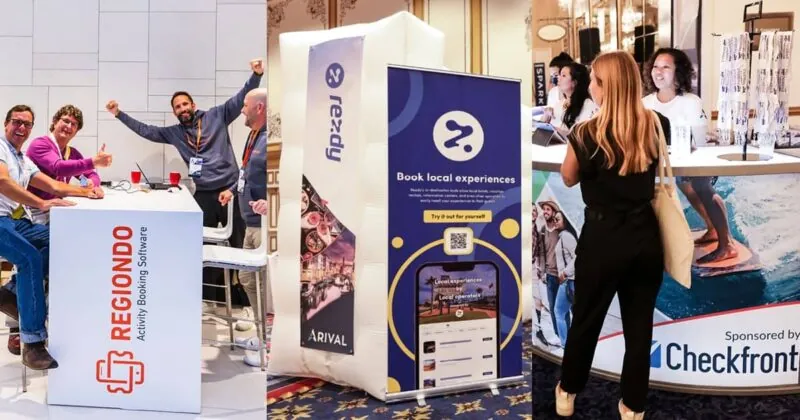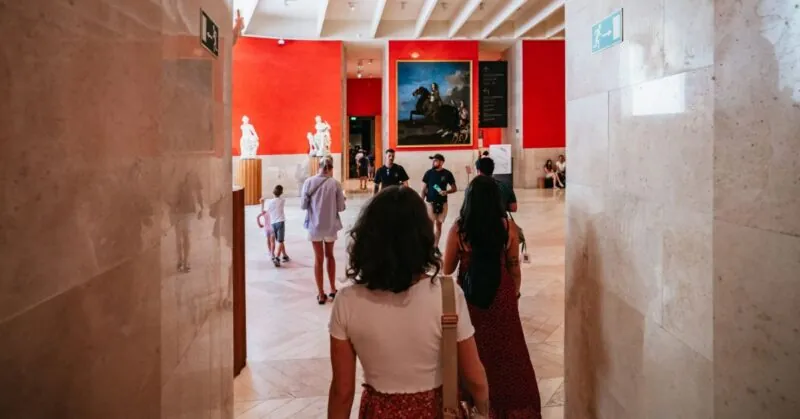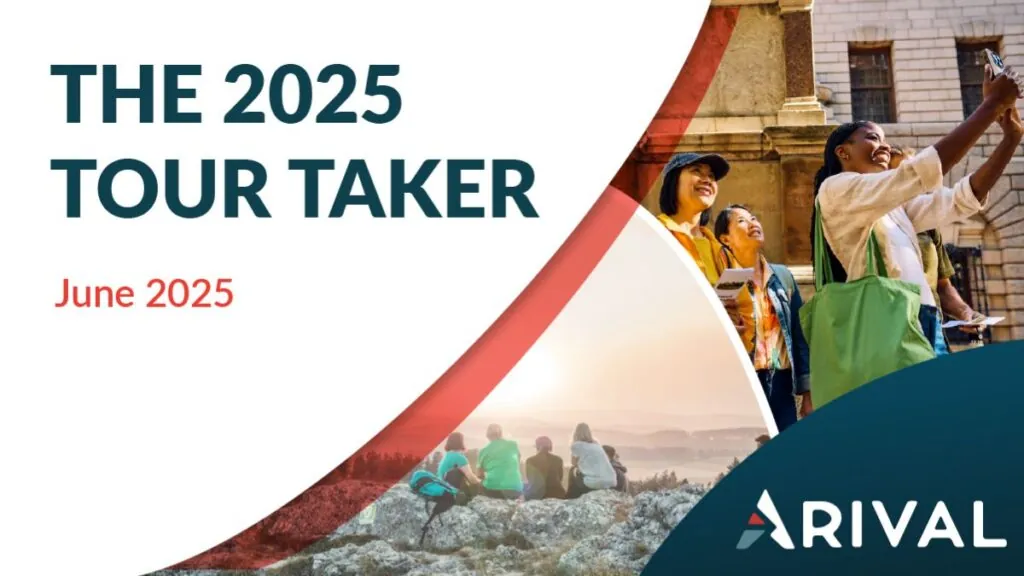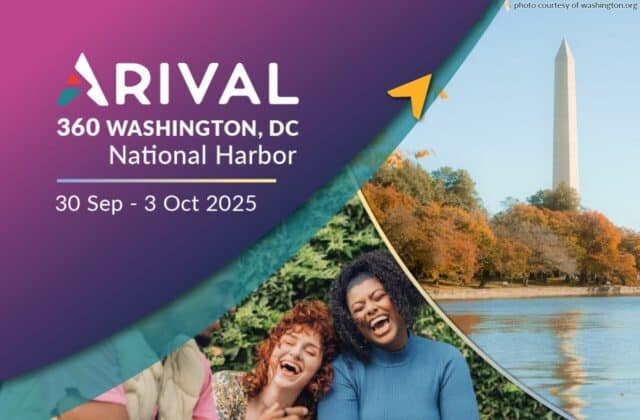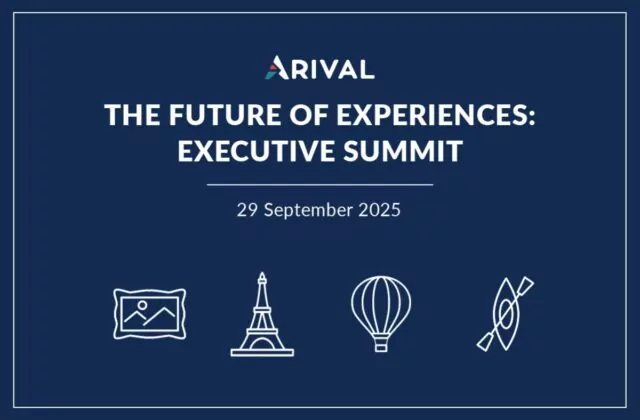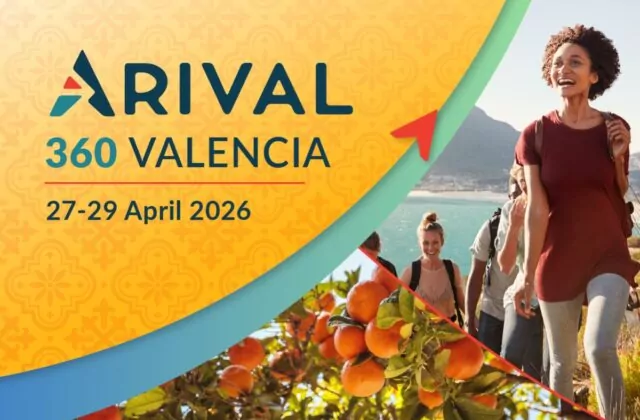It’s no secret across the corporate world that women are under-represented in leadership. Travel is no exception. Although women represent half of the global workforce in travel and tourism, men account for the vast majority of leadership positions in travel, according to the World Travel & Tourism Council (WTTC).
Travel experiences – tours, activities, attractions and other visitor experiences – may be an emerging bright spot in the gender representation gap.
Arival’s recent Global Operator Landscape (3rd Ed.), a survey of nearly 8,000 travel experiences professionals, including 7,000 operators of tours, activities and attractions, found women hold a larger share of leadership and managerial roles in the experiences sector vs. the travel industry as a whole.
The numbers are encouraging, but numbers are only part of the story. We reached out to several key leaders in the travel experiences sector to dig deeper into the state of women leaders in tours, activities and attractions.
Here’s what we cover:
- Women in Travel Experiences Leadership: By the Numbers
- From Glass Ceiling to Grassroots: The Entrepreneurship Factor
- Why Experiences? Prioritizing Meaningful, Authentic Work
- Good for Business: The Companies Doubling Down on Diversity
- The Road Ahead for Women Leaders: Insights & Recommendations
- Stronger Together: Uniting Women in Travel Leadership with Arival
Women in Travel Experiences Leadership: By the Numbers
We included a question about gender for the first time in our Global Operator Landscape (3rd Ed.) survey in 2024. Of the 7,773 respondents, 64% identified as male, 33% as female, and 3% as “other” or declined to answer. We then sorted the responses by title and compared them to the results from the 2023 WTTC report The Numbers Behind Women in Leadership: Leisure.
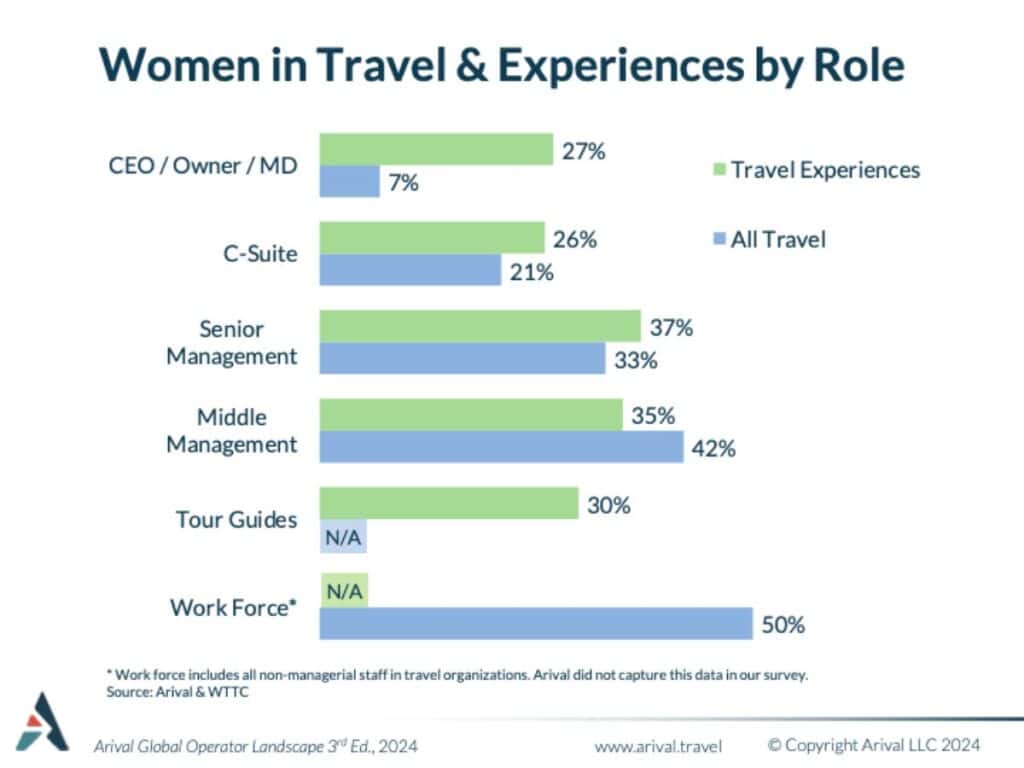
More than One in Four C-Level Leaders Are Women
The most remarkable difference between travel experiences and the rest of travel is the significantly higher representation of women leaders. More than one in four CEOs, owners, co-founders and managing directors in tours, activities and attractions identified as a woman, compared to just 7% in the WTTC report.
Women also have greater representation in almost all leadership roles in travel experiences vs. the rest of tourism: 26% of all non-CEO C-suite executives identified as women (vs. 21%), and 37% of senior management (executives and VPs) are women, vs. 33% for the travel overall.
Representation Remains Consistent Across Company Size
At first glance of the data, we hypothesized a key factor behind the much higher representation of women as CEOs, owners or managing directors could be the greater share of small businesses in the tours and activities sector. Two in five operators are small (served fewer than 1,000 guests in the past year) and another 36% are medium-sized (served between 1,000 and 10,000 guests), according to Arival’s Global Operator Landscape: The State of Experiences, 3rd. Ed.
However, this turned out not to be the case — the proportion of women in CEO or owner roles in tour, activity and attraction companies remained consistent between small, medium and large company sizes.
“The glaring difference between our industry and the broader travel industry in terms of CEO and founder/owner positions is quite striking,” observes Sarah Dines, Chief Commercial Officer at experiences online travel agency (OTA) Viator. “Just the number of women in senior roles is far greater in our industry.”
So what is it about the experiences sector that lends itself to a greater proportion of women in leadership roles?
From Glass Ceiling to Grassroots: The Entrepreneurship Factor
One factor contributing to the higher proportion of women at the CEO and founder level is the number of women founding companies in the experiences sector.
This is due in part to the fact that there are fewer barriers for female entrepreneurs in the experiences sector compared to other sectors, explains Iris Serbanescu, founder of wmnsWORK, a non-profit organization that runs a business accelerator program for women+ (female-identifying and non-binary) entrepreneurs in tourism. “It’s relatively low-lift to start a service-based business in travel.”
This is important when one of the issues female entrepreneurs have to contend with is access to capital — or lack thereof. “When you look at the stats of who gets capital in terms of investment funding, it’s 98% men. Women get around 2% of all investment funding,” Serbanescu explains (more on this stat here). “So women are more likely to enter fields where they don’t need a huge amount of startup capital and can just have a computer and maybe a freelance guide. They can kind of create their own business out of nothing.”
Many women also found companies because it’s preferable to contending with corporate ladder climbing, Serbanescu observes. “There are still so many barriers to climbing the ranks in an organization. I can continue to put in the work and then potentially not be rewarded based on merit because there are other people that look different than me that would get those positions. Or I can take the power back and do my own thing, and create my own success and income.”
27-29 April 2026
Insider Pro Access Members Save 20%
THE event of the year for the European in-destination experiences industry
Get Your Super Early Bird Ticket Today!|
Why Experiences? Prioritizing Meaningful, Authentic Work
Another contributing factor to the higher proportion of women leaders in experiences, observes Alessandra Alonso, founder of Women In Travel CIC, is the association between experiences and meaningful work.
“Women often seek meaning in their work,” says Alonso. “They go into a job or they set up a business because they have a mission, a vision, which often includes doing something meaningful, giving back. This is also why social entrepreneurship sees the majority of women leaders, compared to for profit or traditional entrepreneurship.”
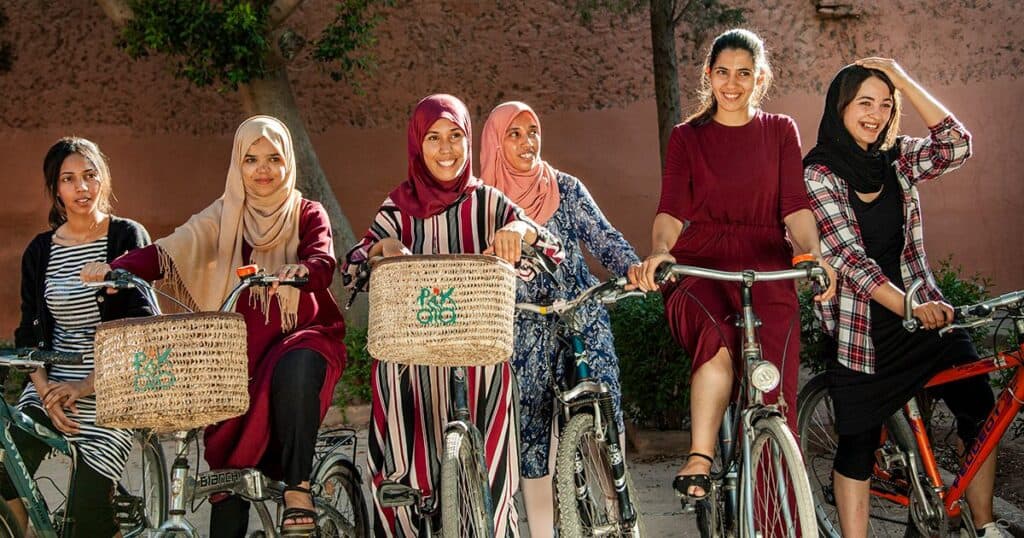
Authenticity is another factor, notes Dines. “The way I think about authenticity quite simply is something that is true to place or culture. We see — and other companies see — this massive rise in experiences that are immersive,” such as food tours and cooking classes.
Culinary experiences are one of the top experience categories among travelers, Arival’s latest consumer research has found (report forthcoming). Viator’s own data reflects this: according to their latest trend report, cooking classes are among the top 10 most popular experiences on the platform, and — alongside craft classes and dance classes — are the highest-rated experiences of the year.
Incidentally, the proportion of women CEOs and owners of cultural activities and classes is significantly higher than the average — 53% vs. 33% of all respondents (Arival Global Operator Landscape (3rd Ed.)).
“Women hold the cultural history of a place in food, so who better to create, market and deliver those experiences than women,” says Dines.
Good for Business: The Companies Doubling Down on Diversity
“Who better?” is a question that extends to the wider travel sector. With nearly 85% of women making travel purchases, who better to appeal to that demographic than… other women?
In a period of time when some companies and organizations are rolling back diversity initiatives — particularly in the U.S. — other companies are doubling down on them, citing the business value of having diversity at the leadership level. Here are a couple of examples:
Intrepid Travel’s Journey to Gender Diversity
One example is Intrepid Travel, a multi-day small group tour company and certified B Corp whose leadership team outperforms the industry average in terms of gender diversity — with 36% of the executive positions (C-level and managing directors) and 57% of overall management positions held by women.
“From our perspective at Intrepid we’ve never been more committed to continuing to diversify our supply chain, our people, our teams because we see the value of doing it,” shares Zina Bencheikh, Managing Director of EMEA (Europe, the Middle East and Africa) at Intrepid. “We know it’s what makes us a better business and we can prove it in every single metric that we have.”
Financially speaking, Intrepid’s business has doubled since they began undertaking measures to increase gender diversity, Bencheikh shares. The multi-faceted approach involved everything from recruiting more female guides, to offering leadership development opportunities and providing flexible working hours and childcare allowances for mothers returning to work. On the customer-facing front, this led to developing products oriented towards female travelers, such as expeditions guided by women for women that ended up being Intrepid’s single most successful product launch in the company’s history.
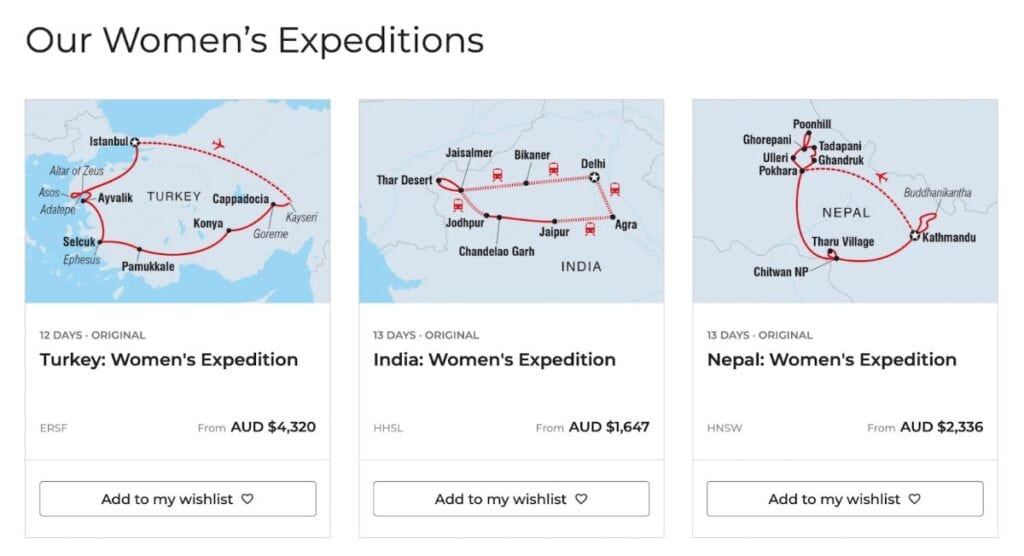
These measures have led to a positive feedback loop, attracting high caliber talent that wants to be involved with the company because of them, and paving the way for female leaders to grow into senior leadership positions from within.
“It really does make business sense to have a diverse team and diverse board and diverse management team,“ emphasizes Bencheikh. “I just wonder how much people are realizing the link between diversity and success…. If Intrepid is a successful company it’s because of its people. That’s the only asset we have.”
Viator’s Majority-Women Executive Team Developed from Within
Another company doubling down on gender diversity is Viator. As a leading experiences OTA and one of the only publicly-traded companies in the experiences sector, Viator’s success is no secret. According to parent company Tripadvisor’s latest earnings report, Viator accounted for nearly 50% of the company’s revenue, up from 33% in 2022.
And among its peers in the travel technology sector, many of which are led primarily by men, Viator’s leadership stands out.
“The largest parts of the organization are run by women,” says Dines. “R&D, marketing, commercial, legal and HR… every single one of us has been promoted through the organization.”

According to Dines, the positive impact of having multiple women in senior leadership positions trickles down into many areas, from product design that reflects the customer (such as the rising demand for women-centred experiences), to creating user journeys that tailored to customer needs (such as emphasizing whether an experience is family friendly), to recruiting young female talent.
“When I think about our leadership team, I find it both remarkable and unremarkable that so many of us are women. It’s unremarkable to us because it’s just our every day,” reflects Dines, but it’s remarkable when looking around the industry at other companies that have little to no representation.
“A Business Growth No-Brainer”
Serbanescu sums it up well. “It’s not about doing the right thing, it’s more about do you want to have a successful and sustainable business?” She says. “If you look at who’s purchasing travel it’s 85% women, so companies that want to appeal to that demographic would be very well set up to have women on their leadership team.
“Equity is a business growth no-brainer, you’re actually doing yourself a favor by having people on your leadership team that reflect the [people you want to market to],” she continues. “The longevity of your business will depend on the types of people you have at the top.”
30 September – 3 October 2025
Insider Pro Access Members Save 20%
THE event of the year for solutions-focused In-Destination Experience creators and sellers
Get Your Spring Savings Ticket Today!
The Road Ahead for Women Leaders: Insights & Recommendations
While the Arival data on women in experiences sector leadership is encouraging, it’s clear that in 2025 women in travel leadership have a long way to go.
“In a way it’s very reassuring,” says Bencheikh, especially as experiences is also the fastest-growing sector of travel. “I think businesses together can make changes that politics can’t. Businesses can take control of a topic like this one and make positive movement if they wish to because the reality is it can have an impact on your bottom line.”
“We’ve been sort of taking one step forward, two backwards, due to a number of circumstances,” says Alonso. “I don’t want to deny the value, or the importance of this, but at the same time, I don’t feel like I’m going to pop the cork yet, because there is still a lot of work to do.”
So where do we go from here, and how do we get there?
1. Don’t Give Up & Don’t Stay Silent
The first step is not to give up in the face of backlash against diversity initiatives, Alonso says.
“The problem doesn’t go away just because someone decides that we don’t need this anymore…. It’s about staying grounded and continuing to do the work and investing in the knowledge, expertise and organization that can do this.”
For the men in the room, Alonso calls on them to be male allies for their female colleagues. “Do your job, don’t stay silent. Now is the time to be vocal and articulate… when you stay silent you’re basically giving your nod to what’s happening.” Women In Travel CIC hosts a male allyship network for men who want to practice supporting and advocating for women and other members of marginalized groups.
2. More Focus on Diversity of Women in Travel
The leaders we interviewed each emphasized the importance of supporting diversity among women in leadership.
“We are not at the destination yet, there’s a lot to go in our journey,” says Dines. “Gains that have been made have been largely with white women and one of the things that’s important to me as a leader, to shine a light on that women of colour are not reaping the benefits that white women are. Our challenge is to continue to try to make progress and at the same time broaden our thinking.”
“There are so many things we could and should be doing,” says Serbanescu. “Examining our own biases and putting in the work to overcome them is number one. Question everything, question why we do things the way we do them, question why there are no black women on any board in the travel industry.”
“Let’s progress inclusion for everyone, for all women,” says Alonso.
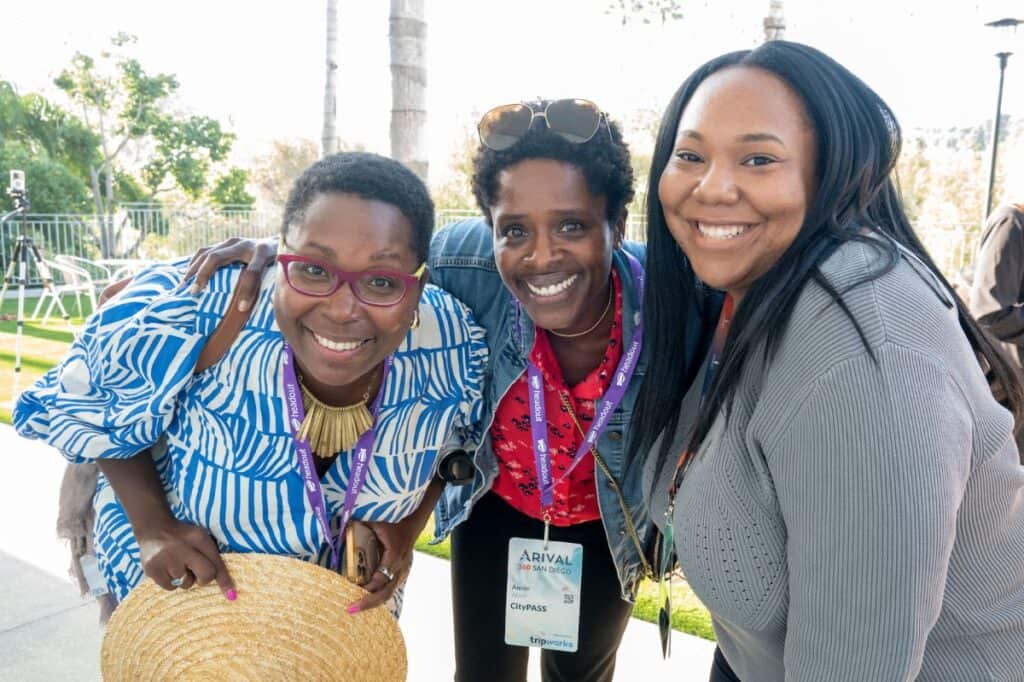
3. Target Diversity in Marketing, Recruitment and Leadership Development
Marketing is an obvious place where tour companies can improve, according to Bencheikh. “When I see ads that only represent [a white family], why would I want to book a trip with them? Show some other customers in your ads, show that diversity. Ask, ‘how can we as a travel company amend our marketing and make it more inclusive?’”
Recruitment is an important part of the puzzle as well. “This is where diversity away from just white women comes in significantly,” says Dines, noting that a focus on recruiting a diverse array of people can help you “seize upon opportunities, customer sets that you maybe never thought to serve.” Dines refers to organizations like The Mom Project and Tear The Paper Ceiling that help match diverse women with organizations seeking to broaden their recruitment horizons.
Finally, leadership development programs help address the gender diversity gap in companies at the roots, and also help companies work diversity into their DNA. “How do we help women fight the unconscious bias? Women need to be 120% at the level of the men to fight for a higher job,” Bencheikh acknowledges. Leadership development programs and initiatives, such as those Intrepid has implemented to assist parents when they have children, help tackle the problem at the roots.
This is also one area where collaborating with organizations like Women In Travel CIC can help companies identify problems and implement plans to improve. “Together in a collaborative way, we can make the difference, specifically for diversity of women in travel,” says Alonso.
4. Seek Companies Where You are Valued — Or Start Your Own
For women looking to progress in their careers in travel, Dines encourages them to seek companies where they will be valued. “Look at the current leadership,” she says, and encourages women to see if the company already has women in positions of leadership, and has programs to support women in becoming leaders. “Don’t stick around in places where your diversity is not valued, and don’t wait around for opportunities to come to you. Be proactive and seek out opportunities,” she says. “Understand your own power to make choices about your career.”
And if the corporate path doesn’t work for you and you would rather build your own thing, Serbanescu encourages women to take the leap into entrepreneurship. “If you’re a woman or nonbinary entrepreneur thinking of starting a business, just go for it and see what happens,” she says. “You don’t know what’s possible until you take that first step.”
Stronger Together: Uniting Women in Travel Leadership with Arival
To learn more about women+ entrepreneurs in travel, join us at the next Arival Insider Pro Meetup, where Iris Serbanescu and one or more entrepreneurs from her wmnsWORK tourism business accelerator program will join us to share their experiences and tips for other tourism industry entrepreneurs.
Also, join us at Arival 360 | Valencia in April, where we are launching a collaboration with wmnsWORK. We will present two sessions focused on women in experiences leadership and provide the opportunity to network with women in leadership positions in the experiences sector.
Learn More with Arival Research
Dig deeper into Arival’s Global Operator Landscape (3rd Ed.) research and find the full list of publications in this research series here:
- Global Operator Landscape: The State of Experiences
- Getting Direct: The State of Digital Marketing
- Global Operator Landscape: The State of Visitor Attractions
- The State of Women+ Leaders in Travel Experiences
- Global Operator Landscape: The Profitable Operator
- Global Operator Landscape: The State of OTAs & Operators
- Inside Enterprise Attractions
- Global Operator Landscape: The State of Booking Tech (coming soon!)
- More reports to come: stay tuned!
Become an Insider Pro Access member today and get access to the full library of Arival research, plus many other benefits such as free consulting sessions, special discounts and 20% off in-person events, starting from $179 per year.
Sign up to receive insights tailored for the in-destination industry as well as updates on Arival.
